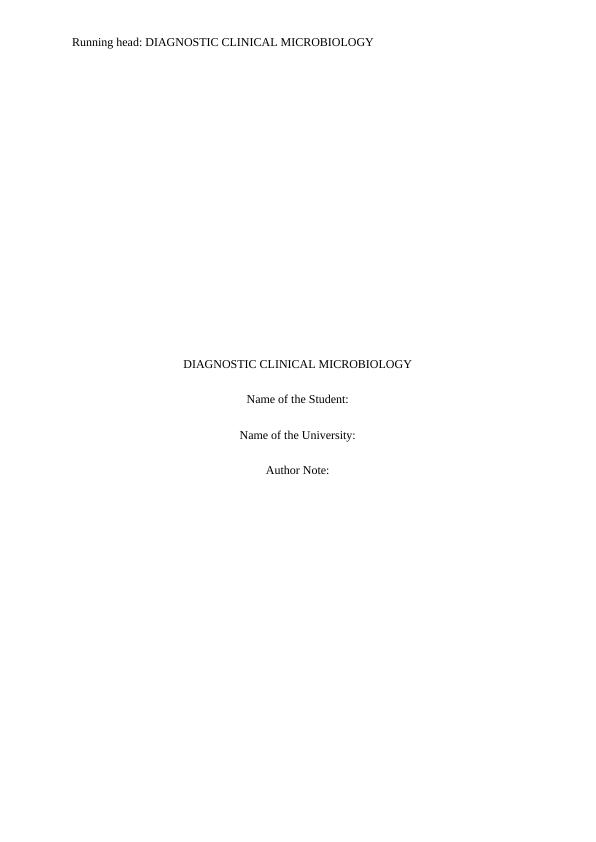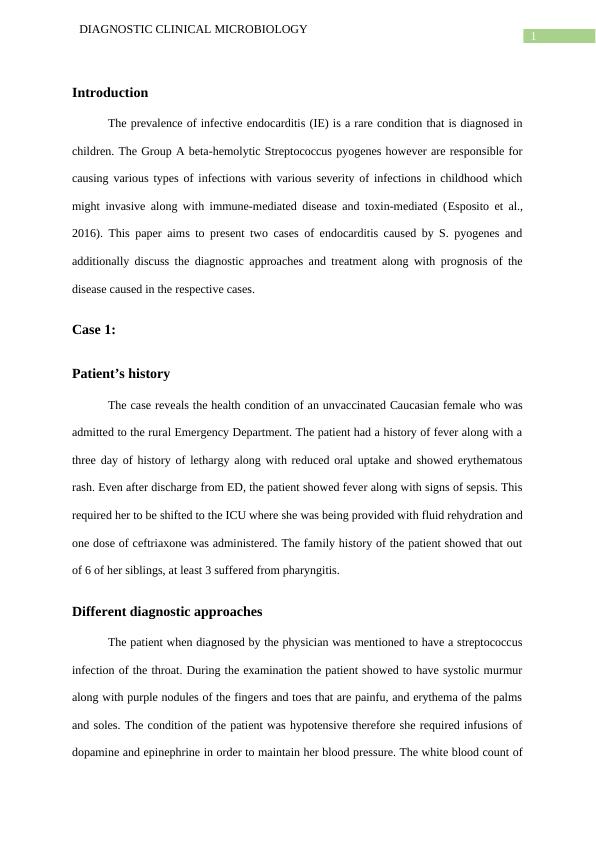Diagnostic Clinical Microbiology: Two Cases of Endocarditis Caused by Streptococcus Pyogenes
Construct an assay to outline and summarize two cases of Streptococcus pyogenes endocarditis in children, including patient history, diagnostic approaches, treatments and prognosis, and student's own suggestions for the given cases.
8 Pages1646 Words167 Views
Added on 2023-06-04
About This Document
This paper presents two cases of endocarditis caused by Streptococcus Pyogenes and discusses the diagnostic approaches, treatment, and prognosis of the disease. The paper also provides recommendations for the diagnosis and treatment of the disease.
Diagnostic Clinical Microbiology: Two Cases of Endocarditis Caused by Streptococcus Pyogenes
Construct an assay to outline and summarize two cases of Streptococcus pyogenes endocarditis in children, including patient history, diagnostic approaches, treatments and prognosis, and student's own suggestions for the given cases.
Added on 2023-06-04
ShareRelated Documents
End of preview
Want to access all the pages? Upload your documents or become a member.
Case Study on a Patient with Chronic Back Pain and Drug Abuse
|4
|803
|343
Myocardial Infarction: A Case Study
|7
|1931
|147
Nursing Case Study on Clinical Manifestations, Interventions, and Health Promotion for Mrs. J
|7
|1618
|161
Assignment on Pneumonia PDF
|5
|1114
|74
Mandy Case Study Assignment Report
|12
|3374
|24



